Scopus, KCI, KoreaMed

Articles
- Page Path
- HOME > J Clin Nutr > Volume 8(2); 2016 > Article
- Review Article Sources and Formulation of Macro- and Micro-Nutrients in Enteral Nutrition Formula
- Suhee Kim
- 경장 영양액 조성물에서 다량 영양소와 미량 영양소(비타민, 무기질)의 원재료
- 김수희
-
Journal of the Korean Society for Parenteral and Enteral Nutrition 2016;8(2):45-50.
DOI: https://doi.org/10.15747/jcn.2016.8.2.45
Published online: August 31, 2016
Nutritional Food Business Unit, Daesang Corp
- Correspondence to Suhee Kim Nutritional Food Business Unit, Daesang Corp., 470 Myeonmok-ro, Jungnang-gu, Seoul 02154, Korea Tel: +82-2-2094-5855, Fax: +82-2-435-0241, E-mail: cosmos1018@daesang.com
Copyright: © Korean Society for Parenteral and Enteral Nutrition
This is an Open Access article distributed under the terms of the Creative Commons Attribution Non-Commercial License (http://creativecommons.org/licenses/by-nc/4.0) which permits unrestricted non-commercial use, distribution, and reproduction in any medium, provided the original work is properly cited.
- 898 Views
- 7 Download
- 3 Crossref
Abstract
- Enteral feeding therapy has existed since ancient Egypt, but most of the major advances in enteral nutrient techniques and formulas have taken place during the 20th century through the development of sources and ingredients This review provides a historical account of enteral nutrition (EN), including the sources and formulation of macro-and micro-nutrients in the formula and how to manufacture them. The formulas were improved by the development of raw materials that are easier to digest and the next formula is expected to develop functionality using more raw materials, such as ω-3, amino acid, and more functional ingredients to heal the disease.
서론
본론
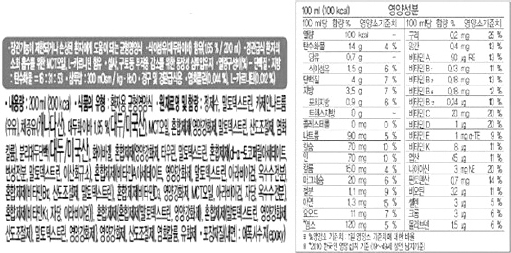
1) 단백질(protein)
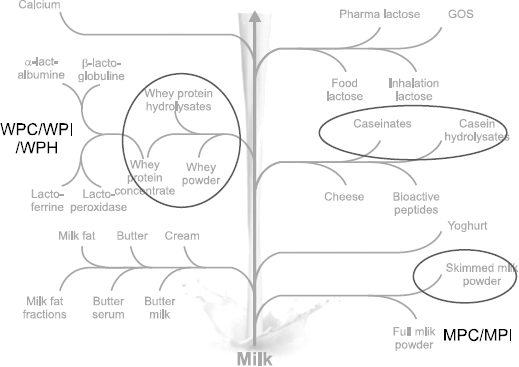
2) 지방(fat)
3) 탄수화물(carbohydrate)
4) 식이섬유(fiber)
5) 비타민/무기질(vitamins& minerals)
결론
- 1. Harkness L. The history of enteral nutrition therapy:from raw eggs and nasal tubes to purified amino acids and early postoperative jejunal delivery. J Am Diet Assoc 2002;102(3):399-404. PubMed
- 2. Institute of Medicine of the National Academies. Dietary reference intakes for energy, carbohydrate, fiber, fat, fatty acids, cholesterol, protein and amino acids. 2005;Washington, DC: The National Academies Press.
- 3. Hughes GJ, Ryan DJ, Mukherjea R, Schasteen CS. Protein digestibility-corrected amino acid scores (PDCAAS) for soy protein isolates and concentrate:criteria for evaluation. J Agric Food Chem 2011;59(23):12707-12. ArticlePubMed
- 4. Paul GL. The rationale for consuming protein blends in sports nutrition. J Am Coll Nutr 2009;28(Suppl):464S-472S. ArticlePubMed
- 5. Alimentarius Codex. Codex standard for named vegetable oils. Codex Stan. 210: 1999. Available from: http://www.smartjd.org/pdf/180/11294206.pdf
- 6. Marchal LM, Beeftink HH, Tramper J. Towards a rational design of commercial maltodextrins. Trends in Food Sci Technol 1999;10(11):345-55. Article
- 7. European Food Safety Authority. Scientific Opinion of the Panel on Dietetic Products, Nutrition and Allergies on a request from the EC on population references intakes for carbohydrates and dietary fibre. EFSA J 2008;894:1-9.
References
Figure & Data
REFERENCES
Citations

- Production of BCAA Fortified Soybean Powder Hydrolysate Using Enzymes from Bacillus amyloliquefaciens and Its Application in Functional Protein Formula Foods
Hyo Min Jin, Ae Eun Im, Jeong-Yong Cho, Seung-Hee Nam
Journal of the Korean Society of Food Science and Nutrition.2023; 52(4): 383. CrossRef - Physicochemical and sensory properties of protein-fortified cookies according to the ratio of isolated soy protein to whey protein
Hye-Rin Park, Ga-Hyun Kim, Yeseul Na, Ji-Eun Oh, Mi-Sook Cho
Food Science and Biotechnology.2021; 30(5): 653. CrossRef - Use of Oral Nutritional Supplements for Patients with Diabetes
Mi Ra Kang
The Journal of Korean Diabetes.2017; 18(3): 181. CrossRef
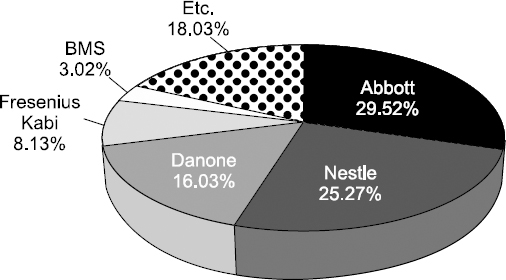


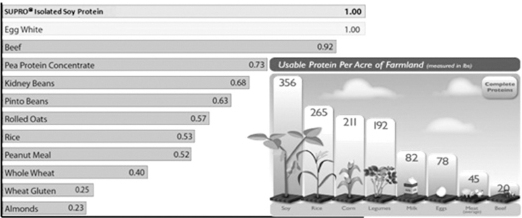
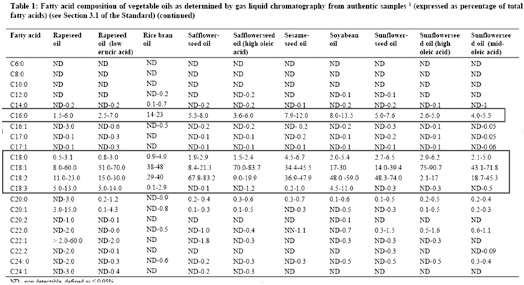
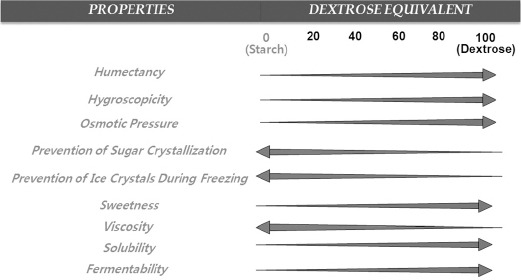
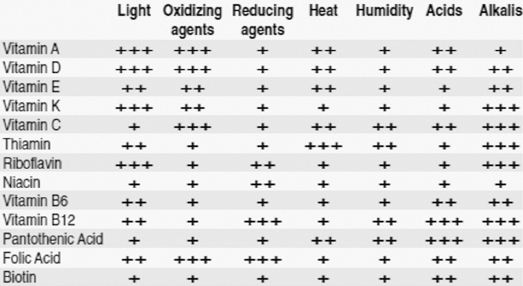
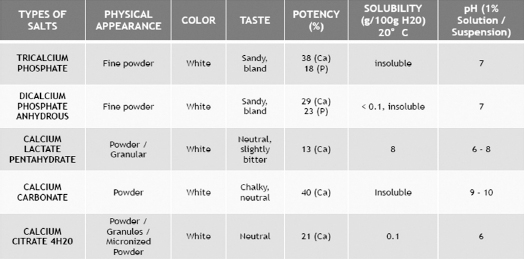
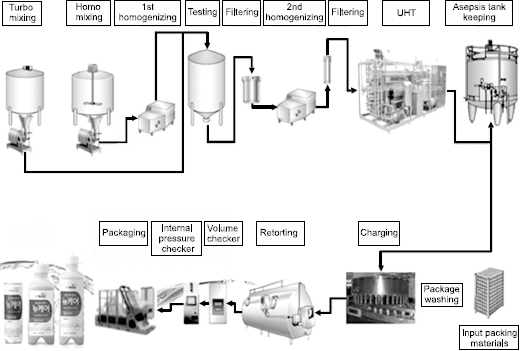
Fig. 1
Fig. 2
Fig. 3
Fig. 4
Fig. 5
Fig. 6
Fig. 7
Fig. 8
Fig. 9
The general characteristics of milk protein sources
| Product | Heat stability | Solubility | Viscosity | Taste | Color in 10% solution |
|---|---|---|---|---|---|
| WPC80 | •• | •• | •• | Neutral/dairy | Cream |
| WPI | ••• | •• | •• | Neutral/dairy | Cream |
| Hydrolyzed Protein | ••• | •• | •• | Bland | Cream/light yellow |
| Esprion300 | ••• | •• | • | Milky | White/cream |
| Calcium caseinate | ••• | ••• | ••• | Bland/neutral | Milky |
| Sodium caseinate | ••• | • | ••• | Bland/neutral | White |
| MPC85 | ••• | •• | •• | Milky | White |
| MCI88 | ••• | ••• | • | Milky | White |
| Total milk protein | •• | ••• | •• | Full/milky | White/cream |
WPC = whey protein concentrate; WPI = whey protein isolate; MPC = milk protein concentrate; MCI = micellar casein isolates.
Protein blend benefits for athletes and active individuals4
| Protein | Compete protein | Digestion rate | Lean body mass gains | High in leucine | High in arginine & glutamine | Antioxidant activity |
|---|---|---|---|---|---|---|
| Whey | O | Fast | O | O | ||
| Soy | O | Intermediate | O | O | O | |
| Casein | O | Slow | O | |||
| Combined | O | Prolonged | O | O | O | O |
Recommended daily allowance of ω-3 based the diffrent institutions
| Institution | Recommended allowance |
|---|---|
| British Nutrition Foundation | 1.2 g/day DHA/EPA |
| UK Department of Health | 0.215 g/day DHA/EPA |
| Committee on Medical Aspect of Food and Nutrition Policy (COMA) | 0.1∼0.2 g/day DHA/EPA |
| Health and Welfare Canada | 1.0∼1.8 g DHA/EPA/LNA |
| International Society for the Study of Fatty Acids and Lipids (ISSFAL) | 0.44 g DHA/EPA |
| National Nutrition Council (Norway) | 1.2 g/day Omega-3 FA |
| German Nutrition Society | 1∼1.5 g/day Omega-3 FA |
| American Heart Association | 900 mg · day DHA/EPA |
Clinical test about functionality of various fibers
| Sunfiber | Poly dextrose | Indigestible dextrin | Inulin | |
|---|---|---|---|---|
| Improve constipation | In volunteer test | In volunteer test | In volunteer test | In volunteer test |
| Improved tolerance and bifidobacteria use | In volunteer test | In animal/volunteer test | In volunteer test | In volunteer test |
| Reduced the cholesterol and fat | In animal/volunteer test | In animal/volunteer test | In animal/volunteer test | In animal/volunteer test |
| Improved glycaemic response | In animal/volunteer test | In volunteer test | In animal/volunteer test | In animal/volunteer test |
| Increasing electrolyte absorption | In animal test | In animal test | ||
| Improved chorionic ileum | In animal test | |||
| Reduced days with diarrhoea | In volunteer test |
WPC = whey protein concentrate; WPI = whey protein isolate; MPC = milk protein concentrate; MCI = micellar casein isolates.

 E-submission
E-submission KSPEN
KSPEN KSSMN
KSSMN ASSMN
ASSMN JSSMN
JSSMN






 Cite
Cite

